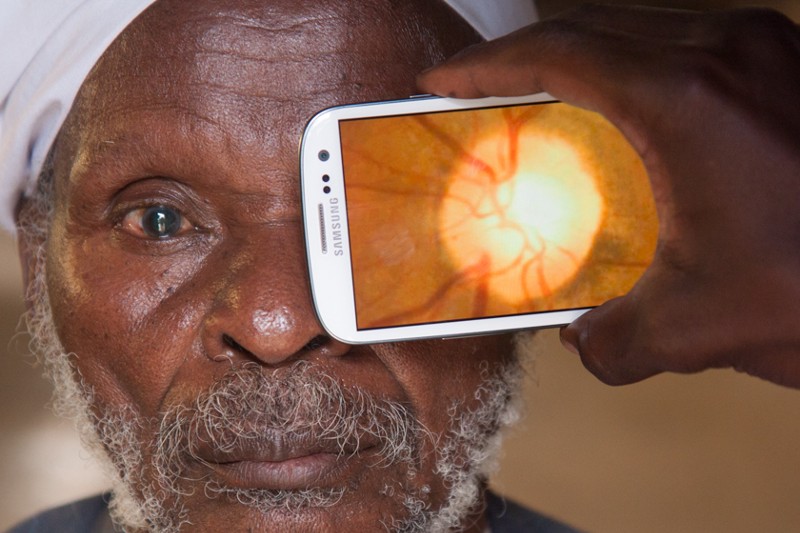

To Andrew Bastawrous, a clinical lecturer in international eye health at the London School of Hygiene and Tropical Medicine, the prospect of spending all of his time in England sounds boring. He prefers to use his skills as an ophthalmologist for helping people in developing countries. “The reason I went into eye care and became a doctor was to do this kind of work,” he said. “I had an awareness from a young age that there’s huge inequality worldwide, and I wanted to do a small bit to contribute to changing that.”
The idea for how to best go about doing that arrived while he was doing research in rural Kenya. Bastawrous found himself lugging expensive, cumbersome equipment around the countryside in order to conduct eye examinations in villages. Once he arrived at those remote sites, however, he often found that the villages lacked electricity, creating yet another challenge for carrying out exams. “I started to think about ways to mobilize that equipment,” he said.
Around 180 million people around the world are blind or suffer from significant vision impairments. Much of that burden could be avoided, however, if they had access to eye care. But many people live far from the nearest clinic and cannot afford to make that journey, and eye care professionals in developing countries are in short supply. When doctors do make rounds in the countryside, they face a logistical bottleneck: Their time is eaten up conducting basic examinations rather than performing procedures on those most in need.
Mulling this problem over, Bastawrous arrived at the idea for Peek Vision: using mobile phones as portable, miniature vision-testing centers. In essence, Peek solves the time problem by establishing in advance which cases demand a doctor’s specialized attention, increasing overall efficiency and allowing ophthalmologists to spend more time actually treating patients. Like a Snellen chart at a clinical office, an app installed on the phone displays shrinking letters that give anyone with a bit of training the means to test a person’s vision. If there’s a problem, a cheap camera attachment allows the user to peer into the patient’s eye and take photos. All of that information is stored on the phone and, if a mobile network is available, can be pushed to the cloud.
So far, proof-of-concept field trials conducted with the Peek app in Kenya show that it works well. Healthcare workers find it easy to use, Bastawrous said, while patients are happy to undergo an examination with a phone. Nine other research trials are currently underway, including ones in Kenya, Tanzania, Botswana, and India. If all goes well, the app will be available to anyone who wants to use it sometime next year. “There’s lots of questions that still need to be answered in terms of how good it is at picking up certain diseases and how it performs in the hands of certain people,” the doctor said. “We want to make sure that anything we develop is backed up by evidence because we don’t want to overstate what this can do.”
Another major challenge, Bastawrous added, is making sure that the patients Peek identifies as being in need of care actually receive the attention they need. To do this, the company is working with partners around the world and it puts an emphasis on collaborating with local healthcare workers who can provide a sustainable, ongoing source of high-quality care. “It’s not enough for people to just have an operation,” Bastawrous said. “They need to have a really good operation for it to be worthwhile.”
Ultimately, Bastawrous hopes Peek Vision can help contribute to the World Health Organization’s global initiative to end avoidable blindness–defined as loss of vision that can either be prevented in advance or cured with proper eye care–by 2020. While that goal seems impossibly steep considering that an estimated 80 percent of the world’s 45 million cases of blindness are classified as avoidable, Bastawrous is optimistic. Already, he pointed out, 30 million people who would have been blinded or remained blind have had their vision restored to them, thanks to this initiative. “Yes, I do think it will be achieved–it has to,” Bastawrous said. “I see no reason why that success can’t continue or be improved in the future.”


How We Get To Next was a magazine that explored the future of science, technology, and culture from 2014 to 2019. This article is part of our Vital Signs section, on the future of human health. Click the logo to read more.
